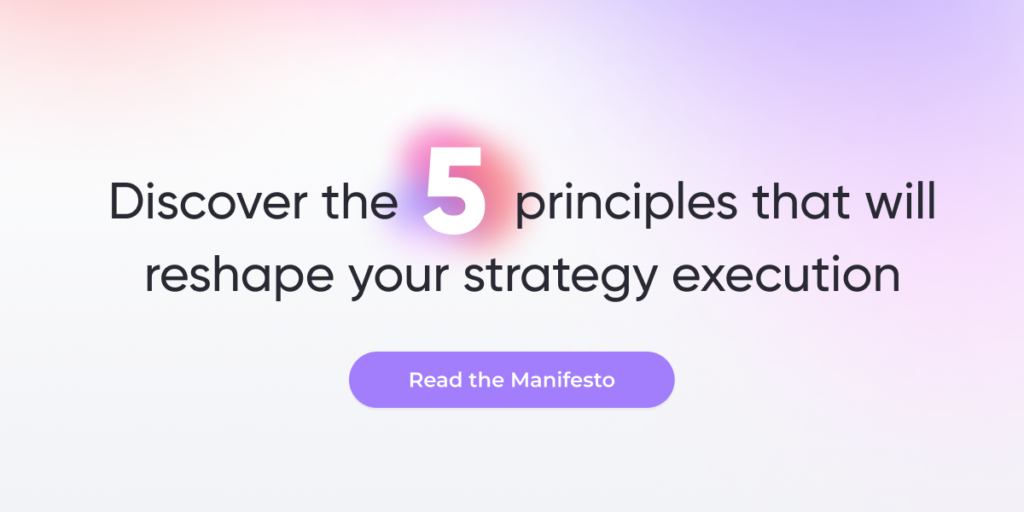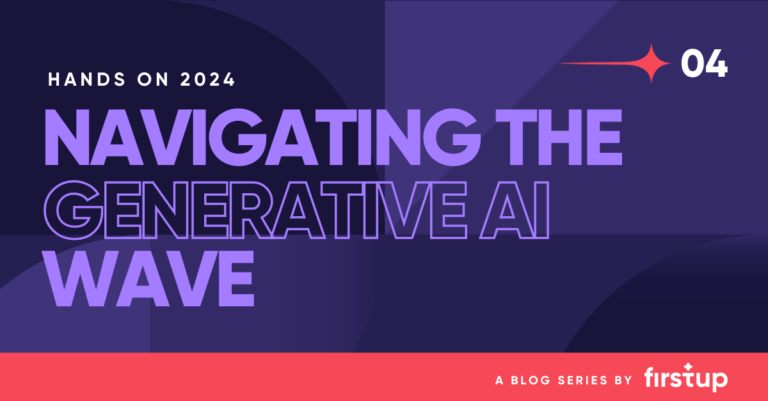What does digital transformation really mean?
Digital transformation is how organizations are using technology to solve traditional problems. Rather than enhance traditional methods, digital solutions enable new types of innovation and creativity.
Companies are adopting new technology tools at a startling pace, but how do you ensure they help every worker thrive at their job?
Effective internal communications is the only way to build trust and align employees to your business objectives. Otherwise, employees are left in the dark with digital initiatives—and that can leave your entire strategy at risk.
At the intersection of a leader’s vision and the employee experience is employee engagement; and such engagement is always driven by a smart, effective approach to internal communications.
Learn more about Digital Transformation from Change Experts like Gartner and McKinsey
What drives digital transformation?
For IT teams to be effective, particularly during the changes that accompany a digital transformation, they must demonstrate through their communication they understand that employees drive business success. McKinsey found that using remote and digital communications to convey the transformation’s vision does a much better job of supporting success than in-person or traditional channels, and when leaders use these channels to reach employees remotely, the success rate is three times greater.

What do you need for digital transformation?
1. Reach all employees with a multi-channel approach.
AKA: Meet workers where they are on their preferred communications channels.
At most companies, employees don’t read all their emails, which means they’re probably missing key messages from IT. It’s also usually difficult for employees (especially frontline workers) to find any useful information on your intranet.
Today, communications demand a multi-channel approach, especially because employees consume content on multiple channels, when and where they want to.
If you meet workers where they are and communicate with them via their preferred channels, you’ll get much better rates of success when it comes to engagement. Some workers (for example, deskless employees) will prefer to get messages from you via a mobile app, while others will prefer email.

To implement a multi-channel approach efficiently, a mission-control workforce communications platform is critical. It enables teams to publish to multiple channels, including intranet, email, mobile app, digital signage, etc. from a single place. Additionally, you’ll have the ability to target employee segments, and then track and measure performance.
2. Create a strong company culture by improving engagement
Let’s be honest: engaging with employees isn’t necessarily easy for any team, much less IT. (According to Gallup, only 20 percent of employees worldwide feel engaged at work in 2021.) Yet input, updates, and information from IT are critical to help employees feel connected, drive innovation, and keep productivity high. And a workforce communications platform can make all the difference.
By improving employee engagement, you’ll create a strong company culture that promotes learning, change, and growth—all of which are critical to employees positively embracing an ongoing digital transformation.
Today, CIOs are expected to play a strong role in cultivating a productive and successful company culture. As Leigh McMullen, VP analyst at Gartner has said, CIOs should think of their culture as an “employee experience program.”
If most employees feel disconnected and don’t understand why decisions are being made, your initiatives are more likely to fail. Engaging content that doesn’t just “tell.” It must turn employees into actors so they can successfully convey the company’s story. When employees have a role and a voice, they invariably become stakeholders in the success of the digital transformation initiative.
How WashREIT Improved Company Culture
Here’s an example of establishing a dialogue (aka sparking a new kind of engagement, via a workforce platform) between workers and the executive team.
“As we think about how technology enables people to do their jobs, to me, it’s meeting people where they are. That’s so much of what makes for good communication. It lets people work where they want to work, it lets people consume information in the way they want to consume it, in the time they want to consume it. It gives them that flexibility to blend that life experience with the work experience.”
— Susan Gerock, CIO at WashREIT.
The challenge – How to reach dispersed employees
Employees at WashREIT are truly mobile. They have a large remote team, and many of the people at their headquarters are constantly on the go, meeting with people outside the office, visiting development and construction sites, and going to properties. Washington REIT needed a good way to reach all their employees and made it one of their strategic goals for the year.
The solution – A workforce communications platform
None of the traditional ways of reaching employees clicked. They turned to Firstup, who provided a workforce communications platform that offered the mission-control technology they needed to meet their employees where they were and on the channels of their choice, such as a mobile app.
Teams took ownership of their own channels to publish content, including IT. And one of IT’s first campaigns was about phishing email awareness. It was so creative, popular, and easy to access that it brought some of the highest engagement of their entire employee communications program. Also, IT introduced their members to the rest of the organization with fun questions and interviews, ultimately creating more in personal connections and building their company culture.
Boosted engagement
3. Create an authoritative system of record for communications.
A dedicated IT channel on a workforce communications platform can help you streamline onboarding, create engaging tutorials, and save time by providing workers with a place to access information directly and resolve their issues independently. Here are a few examples of the benefits other CIOs have seen after implementing a workforce communications platform.
- Share “how-to” resources (such as passwords, printers, wifi, internet instructions, etc.).
- Manage and publish important IT documents, thereby establishing a single source of truth that workers can search and access with ease.
- Educate employees on best practices and tips on important issues, such as cybersecurity, rules around setting up new software, and IT resolution channels.
- Update and refresh documents easily, so the most up-to-date information is always readily available.
A workforce communications platform with smart-searching capabilities also offers employees a way to find materials much easier than on an intranet.
4. Resolve IT issues faster and more easily.
- Integrate your knowledge base. Integrate your knowledge base and other important applications, such as Okta, Oracle, and more, into your workforce communications platform. (Examples: Top knowledge Base FAQs for the week, links to time cards, current high priority incidents to the executive team, etc.)
- Enterprise-level security. Ensure your organization’s safety with enterprise-level security. Read how Firstup’s Security & Compliance team is dedicated to world-class security and guarantee a 99.99% uptime with no exceptions here.
- Channels. Create channels exclusively for IT to manage, (e.g., “Software Updates,” “Announcements,” “Onboarding,” etc). Consider seeding the channels with a mix of content, such as IT personnel bios to increase engagement.
- Publish important messages. Maintain all IT documents in one place so they’re up-to-date to keep employees in the loop and the knowledge they need whenever they may need it.
- Collaborate across teams on customer service and employee technical issues to resolve IT tickets faster and more efficiently.
5. Optimize your entire communications tech stack.
Many IT teams make do with typical communication channels; what they don’t realize is a single, comprehensive platform can integrate those channels, including email, enterprise social networks, intranet, etc., and optimize your communications overall.
Not only does a workforce communications platform make it easier to reach all employees (even deskless and frontline workers), but it also makes executing communications faster and more efficient. By integrating your legacy communications into a single platform, IT teams will be more efficient, innovative, and save money with this
Firstup, for example, has completely replaced or heavily augmented several legacy internal platforms, such as email newsletter applications, CMS platforms, and digital display systems. By integrating with existing platforms like intranets, sales tools, etc, Firstup has helped IT increase adoption and usage of those existing platforms while increasing publishing efficiency.
6. Streamline your communications campaigns and make them more efficient.
An integrated communications system allows your team (and others across the organization) to communicate more efficiently and effectively. Rather than copying and pasting content across channels, they can publish once to reach employees on all the channels they choose. They can target employee segments, and they can automate tedious tasks such as draft control and content scheduling.
And if an organization has too many tools and channels, a workforce communications platform unifies the entire system. It connects all the channels, including collaborations tools like Yammer and Slack, so they can become a cohesive tech communication stack rather than adding more apps.
Additionally, employees want to share their work experiences with the rest of the organization. They want to feel connected to their company and engage with teammates, especially if they are frontline or remote. So all teams from across the organization must all be involved in internal communications. The best way to successfully manage governance is with an integrated workforce communications platform. It decentralizes communications to give all teams and employees a voice, while helping leaders manage it in one place.
Our employee end-user data shows that the best programs have a 70/30 publishing rate, 70 percent admin posts and 30 percent employee-generated content. And with all these systems and channel preferences, you need a central place to streamline all communications.
7. Accumulate critical analytics to inform successful strategies.
Leaders strategize best when they have good data to guide them. The best way to understand communication performance is by providing integrated analytics reporting across all channels in a central location. Businesses rely on data insights to track metrics and meet their KPIs, and employee communications is no different.
Any comprehensive internal communications strategy should include the ability to corral and analyze detailed metrics and feedback. It’s the best way for communicators to determine how effective they’re being and improve communications at every step across the organization.
With a modern workforce communications platform, you’ll get a bird’s eye view of what’s working and what isn’t. You’ll be able to segment your employee audience and target them with personalized messaging. Then, through reporting features, you’ll be able to analyze and evaluate success with stakeholders. Leaders will continually improve communications to connect and engage their workers.
How to meet employee expectations during a digital transformation
Digital initiatives may seem like they’re all about technology, but their success relies heavily on how well you’re equipped to communicate internally with your workforce. In our on-demand world, employees have high expectations when it comes to the quality of engagement they receive from their corporate teams. By integrating your communications stack with a workforce communications platform, you’re improving the employee experience and streamlining workflows.
CIOs who accept the challenge of engaging their employees demonstrate how fully they value those employees—and set up their teams to undertake highly successful digital transformations and greatly improve IT’s brand within the company.
Learn why effective communications are at the core of all successful organizations. Schedule a demo with Firstup today to learn how we help IT teams.












